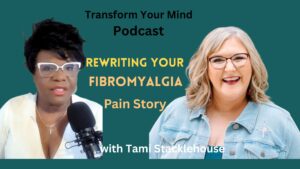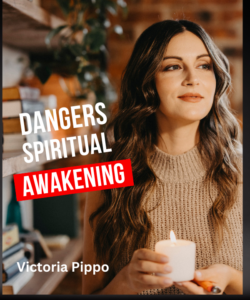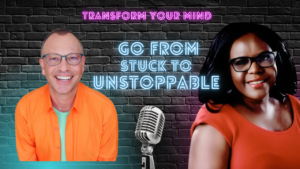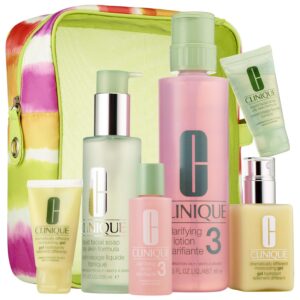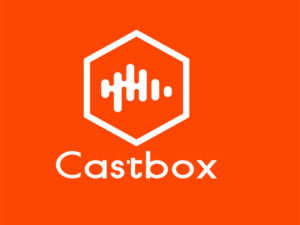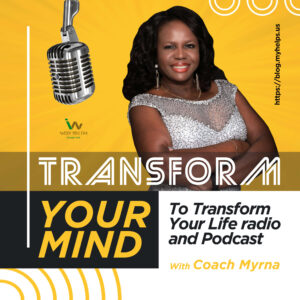Trauma, is a shock to the, nervous system. And when, childhood trauma, is stored instead of released, it can cause physical and, mental health, issues down the road. When, trauma, occurs, in an effort of protection, your brain temporarily pauses your memory processing system, and the experience is not stored as traditional memories.
Today I am talking with Emily Francis. Emily is the best selling author of “Healing Ourselves Whole”
Listen to the full interview here:
Healing Ourselves Whole will give you the tools you need to clean your emotional house from top to bottom, complete with journal prompts and access to audio meditations for you to listen along to as you read.
As a trained, body worker, Emily Francis offers a refreshing perspective into healing, trauma. She reveals unique knowledge of the body as a holder for memory. Emily will lead you on a path deep within yourself to rearrange the ways that, pain, and, trauma, have been holding you back from whole body, mind, spirit, and, energy healing. You will rearrange the dialogue within your body memory systems as well as learn a practice to re-birth by healing your, inner child, and adolescent selves, coming into the present to create the best adult self possible.
This groundbreaking interactive book contains a journal and access to audio meditations for you to listen to as you read. The meditations will help you dig deep into past, trauma, and discover when and how, trauma, took root. Learn to get in touch with various parts of the physical and, energy body, and how to use them to let go of stored, traumas, and rediscover the deeply held joys that have also been stored within the body. From this, you will learn to live from a new mindful and powerful space.

How to release trauma from the body
My Psychotherapist told me to do something called catch and release. Which means whenever you catch yourself being triggered by past, trauma. This happens whenever you begin to feel bad, and you are not sure why. Whenever you feel your body going into reaction mode, breathe in and then release it. This allows the feelings you have stuffed down to come out.
Myrna – Emily can you share with our readers how they can to us start to release, traumatic experiences, from their body?
Emily – In my book, Healing Ourselves Whole, I help my readers put their own hands on their body. When I am helping my clients in person, I help them, release trauma, in their body by putting my hands on their body to help them locate where the, trauma, had gone in, or the shame, or the guilt.
Why our bodies hold Trauma
Our muscles and tissues store the memory of, trauma. They also store memories of Joy. That’s my work; but I couldn’t write a book and teach you how to do Hands On Healing, so I wrote a book teaching you how to dialogue inside your body. This book “Healing Ourselves Whole” has a chapter for every emotion we hold in our body. We go through a 15 to 20-minute meditation on releasing, body trauma.
The workbook included with the book allows you to journal and go through all the senses to find the, trauma, carrot or the shame carrot or the guilt or grief. I teach you through this book how to do the body work by yourself. I’m not a therapist, so some behaviors and thoughts still need to be treated by, hypnosis therapy, like EMDR.
I work on the part of the body that is holding the, pain, and blocking the healing, so you still need your, cognitive therapist.
Childhood trauma and body trauma are connected
I have some, childhood trauma, and I know that until I became conscious that I was stuffing things down instead of understanding my emotions, I never understood that my, childhood trauma, was influencing my present. My, childhood trauma, also affected my relationships earlier in life before I was able to start to release them.
This is a great topic on releasing, chronic pain, because some people go to their graves not understanding that their quality of life was hampered by, what happened to them. Sometimes the, wounds, were only from, childhood, but relationships earlier in their lives eg. lovers, friends, teachers etc.
Emily, what made you become a wellness expert?
I graduated undergraduate with a science and, wellness, degree then I went on to become an aerobic yoga instructor. Then I started suffering from extreme panic attacks and agoraphobia, so I went from loving to be on the stage, to not wanting to leave my house. I was a college cheerleader, I worked out every day, I was at the gym three to five hours a day teaching different classes and I was like rocking.
The more crowded the better. I fed off the energy and then I turned twenty-five! I stopped drinking and the mask dropped and the crazy came up. All the, pain, that I had stuff down came to a flying head and I had to stop myself from extreme anxiety and panic attacks.
It took seven years for me to understand that the reason for my anxiety and panic attacks were because of, childhood trauma, that I had stuffed down. I missed a lot of my hot years as a young adult because I couldn’t hang out with friends or go to bars without feeling like I was crazy. I really stepped away from life and just sat out and watched life pass me by. My, mental health, was of grave concern to me. I prayed a lot. I did a lot of intensive work, meditative work. I went to a million different, healers. if I heard of something for, body trauma, I was there. I went through 7 years of, holistic therapy, and nothing worked until I finally broke down and tried a child’s dose of an antidepressant.
When I was able to heal myself, I want to share and that is why I wrote the book Healing Ourselves Whole

Can medications help with Childhood Trauma?
After 7 years of looking for a treatment, I came across a book by a psychotherapist named Tom Rutledge. He suggested medications. I tried it and it worked for me. The antidepressant worked because it regulated my brain and here is the thing that I learnt from Tom. I was reading his book and embracing fear and I decided to write this letter to him. I wrote that I was a big phony and a liar, and I’ve been writing all these years and it was just crap. I am crap and I wrote this long letter. It was like reading my autobiography. I just wrote out all the things I had been telling myself all these years.
Tom Rutledge replied that I should consider medication. He said that we must first regulate the brain before we can start the healing process and suggested that we should try medication. I rejected medication, because it goes against everything, I believe in. It goes against my holistic principal, it was a Band-Aid. I said no I’m not interested, and he wrote back. He said there’s a part that I think you’ve missed, the brain and the mind are not the same thing. The mind is where your thoughts and behaviors are, the brain is an organ in your body. It’s like your heart or your liver or kidneys. You would not hesitate to take medication if your heart or liver or kidneys were malfunctioning.
But, mental illness, comes with a stigma. People hesitate to take medication because they feel it makes them crazy. Antidepressants are just something to regulate your brain. The brain is an organ and you’re missing some chemicals in your brain and that is the reason for the anxiety and panic attacks. Once you get that regulated all the work that you’ve done because you’ve done significant with healers will be able to come through.

Hollywood Endings and How to Get One
Yes, you can create what you want with imagination an intention. The movie themes the world loves are few and simple; they are the themes that have been portrayed over and over since Hollywood began to make movies. These classics have the most wonderful endings: love overcomes all; good defeats evil; the wayward child comes home. Anyone can be a hero, and everyone has a Guardian Angel.
Hollywood Endings – Using Imagination and Intention is about self-awareness, recovery and enlightenment. It’s for anyone who has ever wanted or dreamed of having a “Hollywood ending.” It is for those of us who never had a role model to show us how it’s done. It celebrates the wonder of the movies and urges us to see movies once to be entertained, and then return to see them again to learn from them. We all deserve a Hollywood ending. This book can show you how with life lessons from Dances With Wolves, National Velvet, Die Hard, and The Color Purple, to name a few.
Rewrite your own story and give it a Hollywood ending.

Trauma gets stuck in the body
Trauma, gets attached to your tissues, because the experience of stress, particularly, childhood trauma, causes stress and can trigger active survival responses of fight, flight, or freeze. When your, body trauma, can’t activate or complete these responses, those sensations become trapped in your nervous system.
Trauma, is a shock to the, nervous system. And when that, trauma, is stored instead of released, it can cause physical and, mental health, issues down the road. When, trauma, occurs, in an effort of protection, your brain temporarily pauses your memory processing system, and the experience is not stored as traditional memories.
Instead of being stored as a complete memory, traumatic experiences are thought to be stored as fragments of pictures of, body sensations or, body trauma. These fragments are unprocessed and thus don’t fit in the system as they should. Because they don’t fit, these fragments can surface unexpectedly as nightmares, flashbacks, or general angst and unease. Most of the time you don’t know why you are feeling uneasy.

How to Release Trauma Trapped in the Body
International Trauma-Healing Institute founder Gina Ross has developed a simple process called Emotion Aid. Here is a summary of those steps you can use to begin to, release trauma, trapped in your body.
- First, assess where you are: rate your stress or upset from a low of 1 to a high of 7. If it is high, first practice the following Grounding Steps.
- Begin by Butterfly Hugging and Tapping– hug yourself and then alternately tap on your arms, from side to side, 25 times. Then take a deep breath. Repeat this until your stress level begins to drop noticeably.
- Next, Send Roots into the Ground. Notice your feet or, if your seated, your back, buttocks, and back of your legs in the chair. Now notice your feet or lower body being firmly connected to the floor, then to the ground, like roots going deep into the earth. Take a deep breath. Then gaze about the room and notice objects or textures about the room, remaining connected to your “roots.”
- Finally, Notice Breathing: Put one hand on your chest and one hand your belly. Now just be with your breath, not trying to change it, but just noticing the rhythm of it. Then make a heart shape with your fingertips and bring awareness to your beating heart.
How to discharge body trauma
- Now begin to Discharge Sensations and Release Stress.
- First, notice your breath and Breathe Notice any sensations that come up naturally. As you release, trauma, and stress hormones, they will present through sensations like shaking, heat, sweating, yawning, goosebumps, changed breath, and gurgling in the stomach. Be curious about the feelings and be with them, and they will naturally discharge. Do not judge or critique what you are feeling or sensing.
- Next, briefly review the, childhood trauma, or troubling thoughts that lead to the sensations. As you review, notice the Feelings that come up as you consider what happened. It’s important to go slow so that you’re only allowing the activation of one feeling at a time. Just be with it and give it plenty of time. Then notice the discharge that emerges as you follow the sensations. (Know that you can temporarily set aside sensations and emotions that you are not focusing on at the moment. For example, imagine putting them on a shelf for the moment.)
- Then work with the Thoughts. Again, as you notice one thought at a time, observe the sensations that show up with these thoughts. Let go of the judgment or criticism. Just be present and continue to observe what happens next and experience the sensations discharging and releasing from the body.
- Now notice and bring to awareness Resources. A resource is anything that feels strong and calm to you. These can be external (for example, the kind eyes of a good friend) or internal (perhaps the memory of a personal achievement). As you recall or hold these resources notice the sensations that show up in your body. Take a few minutes to feel the sense of calm and strength in your body.
Conclusion
Listen to Emily radio show All About Healing
Subscribe to the Transform your Mind Radio Podcast and TV show on iTunes, Spotify, or any of the podcast players
If you would like daily inspiration on how to transform your life, I invite you to join my Facebook group Lifecoach

